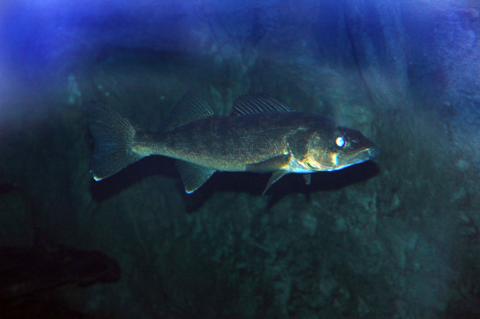Heath Wood
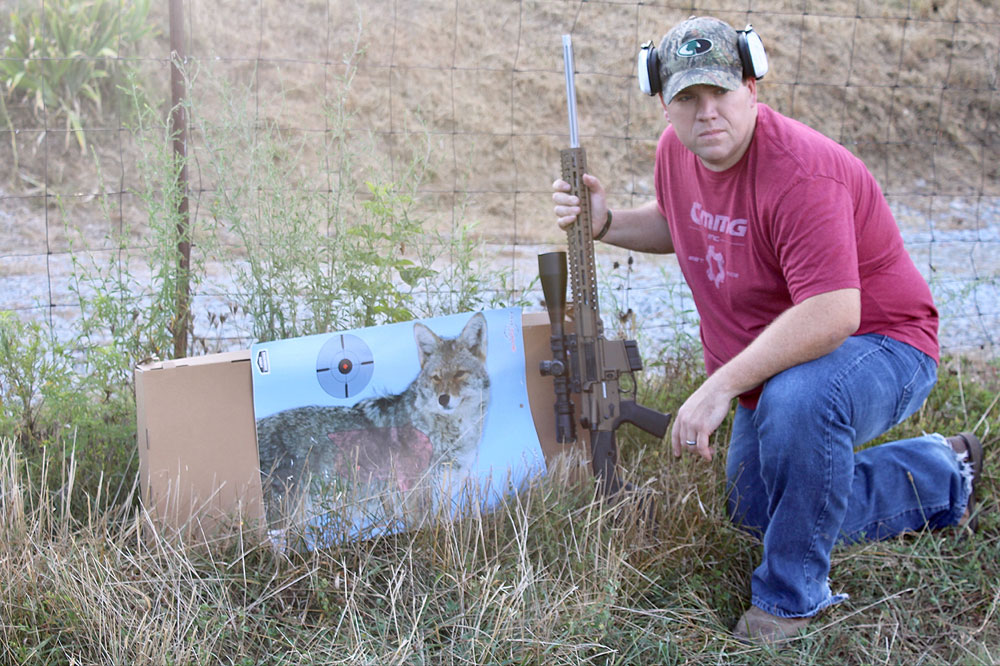
One of the main reasons that predator hunting has become a personal favorite pastime of mine is due to the fact that it gives me the ability to hunt virtually all year with no off season. As my desire for calling coyotes and other predators stays consistent throughout the year, I am motivated to stay on top of my game, especially my shooting skills.
One thing that can make a predator hunter more successful is being able to make the shot when it counts. For example, coyotes can respond to a call slowly across a wide-open area, allowing the hunter time to make a shot. Yet there are times when a coyote can show up out of the brush, only to stick around for a few seconds, allowing little time for a shot to be made. If one is sharp at his or her shooting abilities, the chance of making a harvest increases drastically.
Another reason the need to be on target when the time to shoot arises is when coyotes will not come to the call. A coyote hanging up happens for a variety of reasons, perhaps they are reluctant due to being spooked because they smell something that alarms them, so they choose to stay 300 yards away from the hunter. Whatever the reason, being on top of one’s shooting game will help make a longer shot.
Additionally, a coyote could run away due to the hunter missing the first shot. This scenario can turn out a few different ways depending on the marksman. No matter the situation, if one can make a good shot, they have the advantage to make the hunt successful. In order to keep my shooting skills sharp, I have utilized three different exercises that will keep the hunter in tune throughout the entire year.
Shooting At The Range
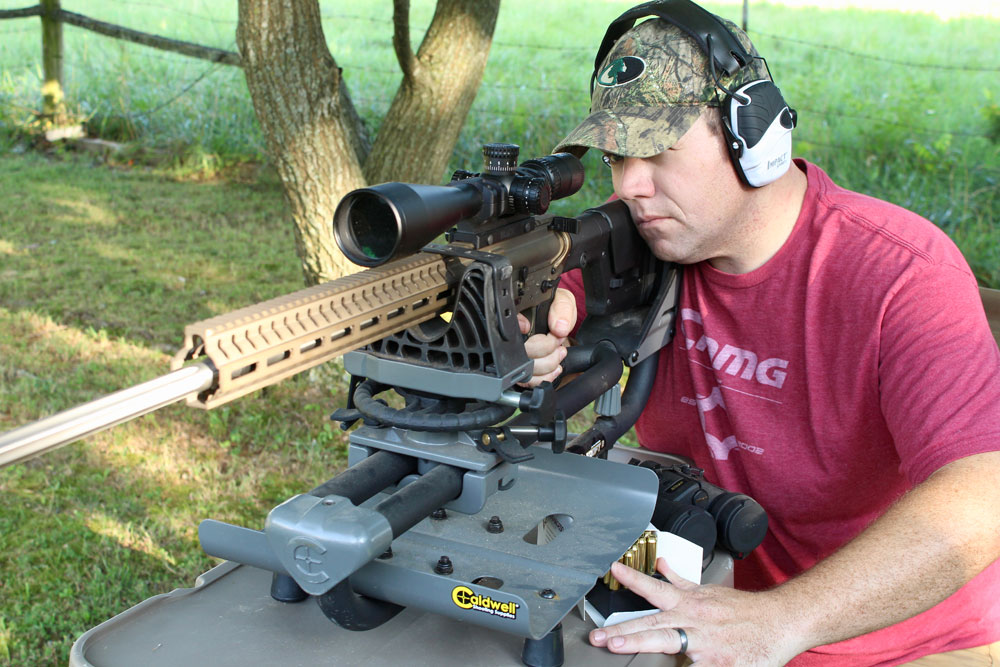
Taking a trip to the local gun range periodically throughout the year can be beneficial in several ways. If one is in need of testing out new equipment - such as a new scope, new sights or perhaps shooting different loads to see what performs the best out of one’s specific firearm - the gun range is the place to go. My personal favorite way to utilize a range is to simply burn through some ammo, allowing more of the so-called trigger time, in order to help familiarize myself with how my firearm shoots. During this time, I will shoot several 5-shot groups at multiple distances such as 100, 200, and even up to 300 yards to assure that my firearm is shooting well and to educate myself, so that I will know where I need to aim at each distance in order to hit my mark. Depending on how much one is hunting, it is suggested to hit the range at least once a month. During the summer months of the year, I like to shoot at a range a couple times a month, compared to winter months when I keep my skills sharp by hunting more. This allows me to stay focused when opportunities to hunt are not as common. When the chance to hunt does arise, I will be ready to go.
Quickness and Reaction Exercises
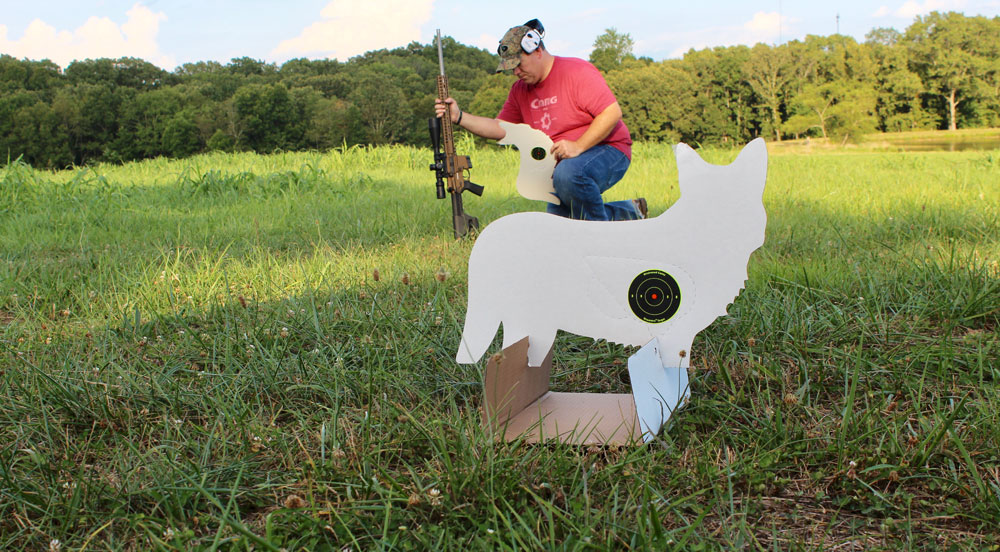
As mentioned earlier, predator hunting can sometimes provide a lot of unexpected shot opportunities. By going to the range, I know my firearm is working properly. The next thing I take into consideration is my ability as a hunter to be able to make those shots when the opportunity presents itself. To do this, I suggest working on one’s quickness and reaction when shooting.
A couple of years ago, a friend and I began using actual life-size coyote targets to put ourselves in a more realistic hunting situation. We would position ourselves on the ground in an actual hunting stance, with our firearms on our Swagger Bipods that we use when hunting. Once we had a target such as Birchwood Casey’s Pregame Coyote Targets in place at random distances, we would then sit, facing slightly in the opposite direction. As in a real hunting situation we would whisper, “coyote to your right.” The shooter would then have to quickly move into position and make the shot on the target. This seemed to help with our reaction time and our ability to quickly get on a coyote when it was time to hunt, thus making more successful shots.
Recently, Birchwood Casey released another type of coyote target called Freedom Targets which is a coyote silhouette that sits into a folded piece of cardboard. This design allows for sitting the target on any type of surface without having to put some type of stand to hold the targets in place. With this type of target, we will set up 2 to 4 different targets in an open area, all at different angles and distances, then the targets are numbered so that when a number is called out, the shooter must quickly find that specific target and make a successful shot. Being as that the targets are close to life-size, this also helps judge the size and distance, as well as react when shooting in a real hunting situation.
Practice With Multiple Firearms And Calibers
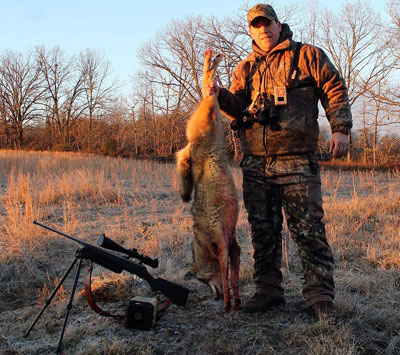 One of the main goals when practicing shooting to become better in the field is that of being able to adjust in different hunting situations. One of the biggest ways to become more versatile is by using different calibers when hunting and when practicing. If one has any experience in shooting, they will agree every firearm will shoot differently, especially different calibers. I have used smaller calibers such as a .223, .22-250 and most recently a .22 Nosler while on different predator hunts. I have also used larger calibers such as a .243 or a 6.5 Creedmoor.
One of the main goals when practicing shooting to become better in the field is that of being able to adjust in different hunting situations. One of the biggest ways to become more versatile is by using different calibers when hunting and when practicing. If one has any experience in shooting, they will agree every firearm will shoot differently, especially different calibers. I have used smaller calibers such as a .223, .22-250 and most recently a .22 Nosler while on different predator hunts. I have also used larger calibers such as a .243 or a 6.5 Creedmoor.
They all work great, however, they all shoot differently. Therefore, I like to shoot multiple calibers while practicing. For example, when recently practicing with coyote silhouette targets, I would shoot a few times with 6.5 Creedmoor, which is a bolt action rifle, then I would switch to my CMMG Endeavor AR which was in a .22 Nosler. Both firearms shot well; nevertheless, I learned that if I know I am going to be in an area where a fast or multiple-shot opportunity may take place, I will most likely use the .22 Nosler AR since the ability to make a fast second or third shot is fulfilled with this gun.
If I am in an area where the chance of a coyote approaching from a longer distance, leaving me with a longer shot opportunity, I would most likely choose the 6.5 Creedmoor. By practicing with multiple calibers, I have the knowledge of which firearm to choose for a specific area when hunting. This allows me to become a more versatile hunter, which in turn means a more successful hunter.
As with a skilled athlete, the desire to become better requires practice and typically when the work is put forth, improvement is the result. This same logic goes for the diehard predator hunter who has the goal of wanting to improve and become better. Practicing is bound to reap rewards when game time finally comes.
















